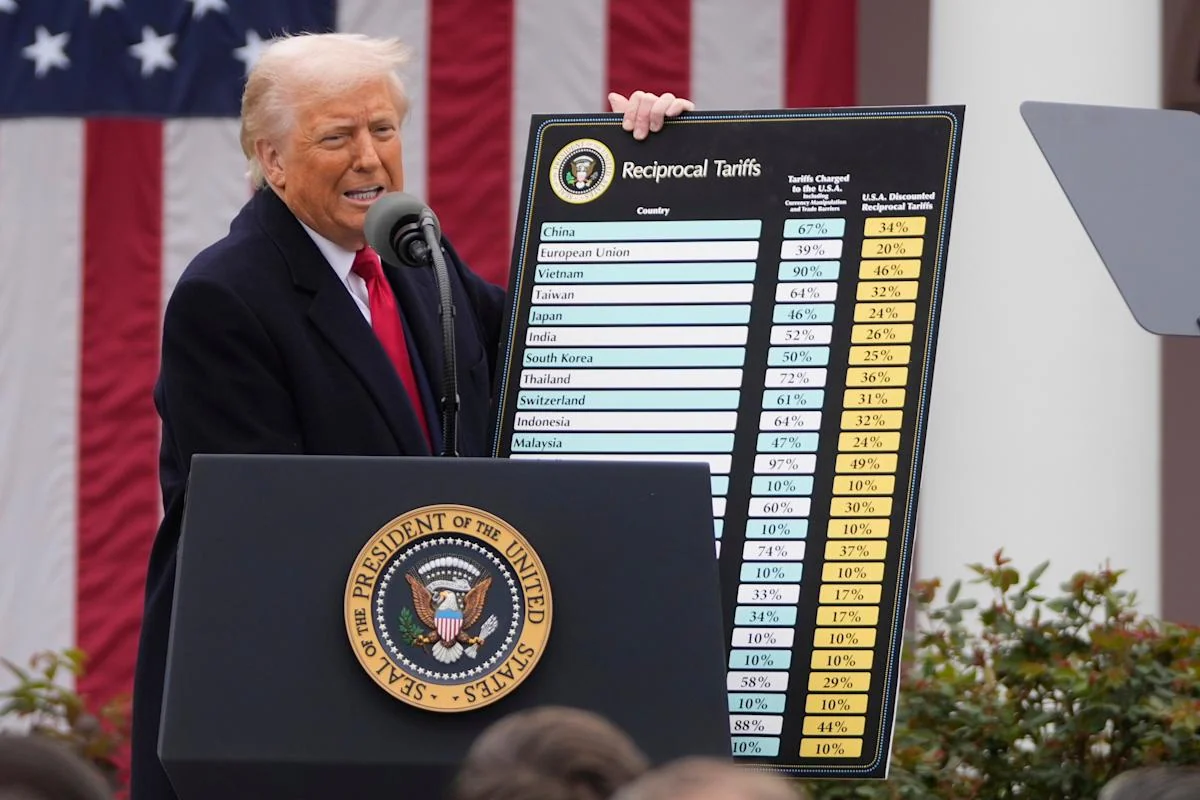
Tariffs are back—and markets are reacting fast.
Former President Donald Trump is once again putting tariffs at the center of his trade policy agenda, with a sweeping proposal that would hit nearly all imports into the U.S. These 2025 tariffs are broader than those from his first term and are already sparking market volatility, raising concerns across industries and borders.
With global inflation still lingering, supply chains adjusting post-COVID, and investors on edge, Trump’s tariff push is injecting fresh uncertainty into an already fragile economy. Here’s what you need to know.
What Exactly Are the 2025 Tariffs?
Trump’s new proposal includes a 10% tariff on all imports, with additional increases for countries like China, Mexico, and some EU nations. It’s a much broader plan than his 2018–2019 tariffs, which primarily targeted specific sectors like steel and aluminum.
Now, everything from consumer electronics to cars and textiles could see price increases. Trump frames the move as a way to “protect American jobs,” but economists warn of rising costs, disrupted trade flows, and retaliation from key partners.
Global Markets Respond: A Mixed Bag
Markets don’t like surprises—and this one was big.
After the announcement, U.S. stocks dipped, with the tech-heavy NASDAQ leading the losses. Investors moved quickly into safe-haven assets like gold and U.S. Treasury bonds, signaling risk aversion.
Asian markets—especially China’s—fell as traders braced for possible countermeasures. European indexes also declined, reflecting concerns over potential hits to automotive and manufacturing exports. Countries like Germany and South Korea, which depend heavily on U.S. demand, are watching closely.
Meanwhile, emerging markets from Mexico to Vietnam saw pressure on their currencies, as investors feared supply chain disruptions and weaker export demand.
Winners and Losers: Who Gains, Who Hurts
Tariffs always redraw the playing field. In this case, a few U.S. industries stand to benefit, but many others will feel the squeeze.
Potential winners:
- Domestic manufacturers, especially in steel, aluminum, and electronics.
- U.S. companies that compete directly with cheap imports.
Likely losers:
- Tech firms that rely on Chinese components.
- Automakers with complex, global supply chains.
- Retailers and consumer brands importing goods for U.S. shelves.
Then there’s agriculture. U.S. farmers, who were hit hard by China’s retaliatory tariffs during Trump’s first term, could again find themselves in the crossfire.
As one UBS analyst put it: “The broader the tariff, the harder it is for global companies to adapt without passing on costs.”
Economic Impact: Inflation and Jobs
Trump’s argument is simple: tariffs protect American workers and industries. But economists see a more complicated picture.
Inflation remains a top concern in 2025. A 10% blanket tariff means higher prices across a wide range of goods—from electronics to clothing to groceries. That’s a direct hit to household budgets, especially for low- and middle-income Americans.
On the jobs front, some factory sectors may benefit, but industries facing cost hikes or disrupted supply chains could cut back. Net job gains are far from guaranteed.
For the Federal Reserve, it’s a headache. If tariffs push inflation higher, the Fed may need to keep interest rates elevated longer than planned—possibly at the cost of economic growth.
Currency Moves: USD, CAD, and Beyond
Currencies have already started adjusting. The U.S. dollar initially strengthened following the tariff news, as investors sought safety. But if economic growth weakens, that strength may fade.
The Canadian dollar slipped as traders priced in the risk to Canada’s exports, especially in energy and auto parts. The Chinese yuan came under pressure, while the euro also lost ground amid fears of lost sales to the U.S.
Currency volatility is likely to persist, especially if trade tensions escalate or retaliation begins. Informações sobre doses diárias notes that forex markets will be watching for every headline and political signal.
Could a Trade War Return?
There’s a real risk this could spiral into a new trade war. China and the EU are unlikely to sit quietly. In the past, China responded with targeted tariffs—hitting U.S. soybeans, aircraft, and even whiskey. We could see similar moves in 2025.
The World Trade Organization may get involved again, but its influence has faded in recent years. Multilateral negotiation isn’t what it used to be.
Then there’s U.S. politics. As the 2025 election ramps up, tariffs may become a defining issue. Trump is betting that tough trade talk plays well with voters. But if prices spike and layoffs hit, his opponents will be quick to pounce. The stakes are high—for the economy and the ballot box.
Final Thoughts
Trump’s 2025 tariffs are already shaking the global economy. For some U.S. businesses, they offer protection. But for most companies, consumers, and trade partners, they bring rising costs and growing uncertainty.
Markets are on edge. Supply chains are bracing. And trade relationships are once again under strain.
Whether this is a negotiating tactic or the start of a new economic era remains to be seen. But one thing is clear: tariffs are no longer just policy—they’re market-moving events with real consequences.
Stay informed, stay prepared. The next chapter in global trade is being written now.




Leave a Reply